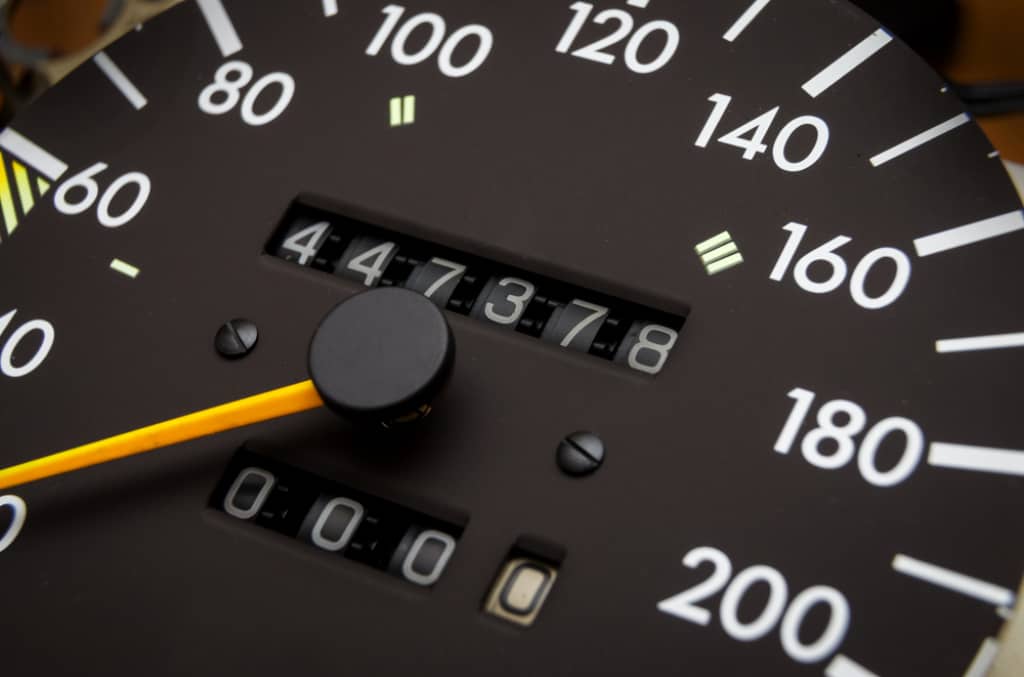Clocked cars have had their recorded mileage reduced.
It’s usually done to make the car more appealing – and more expensive – to buyers. For example, a second hand car could be worth up to £4,000 more with 60,000 miles wiped from the clock. That means an unsuspecting buyer could be overcharged by £4,000.
But money isn’t the only factor. Clocked cars can pose a huge safety risk.
Generally speaking, if a car’s travelled further, it’s more prone to wear-and-tear and more major mechanical issues.
Let’s say you bought a car with an advertised 60,000 miles on the clock – but it had actually done 150,000. Brake pads and tyres could be severely worn, among other issues. And that could cause the car to fail, or end up in an accident.
It can be difficult to spot a clocked car, but it’s not impossible…
Focus on the car’s condition
You can usually spot a car that’s covered a lot of miles – even if the odometer says it hasn’t.
Look for any stone chips on the bodywork; they’re a good indicator of a car with a high motorway mileage. Shiny steering wheels and sagging seats are a key sign of a well-used car. And if these are visibly worn, hidden mechanical components could be too; worn brake pedals or timing belts can be extremely dangerous – or expensive to repair at the very least.
Double check the electrics
Electrical glitches can be a tell-tale sign that the computer has been tampered with. Digital odometers are clocked by hooking a laptop to the car’s control unit and inputting a new mileage. This process can lead to small glitches and malfunctions, like dim or flashing dashboard lights.
Triple check the odometer
Take note of the mileage every time you see the car. Sellers can turn back the clock to make a car more appealing, but put it back to the original mileage on the day you pick it up. That way, they can avoid getting caught selling a clocked car. Make sure the mileage is the same as advertised when you collect it. Don’t drive away if it’s changed.
Get the full history
Make sure you can access the service records and consider getting a vehicle history check. They won’t tell you explicitly whether the car’s been clocked. But they could give you clues:
Mechanics should note down a car’s mileage at every service. So you should be able to track the mileage increase. Keep an eye out for any gaps or jumps in the numbers, eg if the car travelled 10,000 in one year but just 1,000 the next. A vehicle history check should show you the same – but it’ll also tell you if the car has been stolen, written off, or has any outstanding finance.
But be wary. Sellers have been known to forge service records to align with the clocked car.
Test drive a few models
A clocked car can have a similar drive quality to older, heavily-used cars. The brakes might not be very responsive, or the clutch might feel clunky. Test drive a few similar models to compare the drive quality – it could help you spot a clocked car.
I’ve bought a clocked car. What do I do?
If you unknowingly buy a clocked car, don’t sell it on. You’d be committing an offence. Contact your local trading standards office for their advice.
If you bought the car from a dealership, you’re usually entitled to a refund under the Consumer Rights Act. If you bought the car from a private seller, the resolution isn’t as straightforward. You can go back to them and negotiate a solution – but this can be much easier said than done.
Common sense is key – if something doesn’t feel right about the car, it probably isn’t. Carry out these checks before you buy to make sure you’re getting the best deal.






